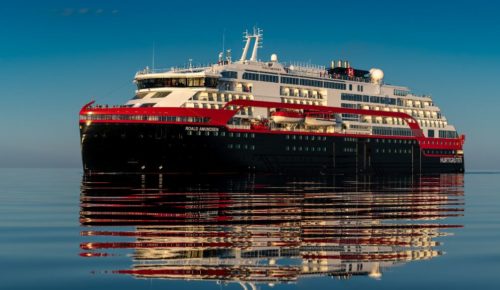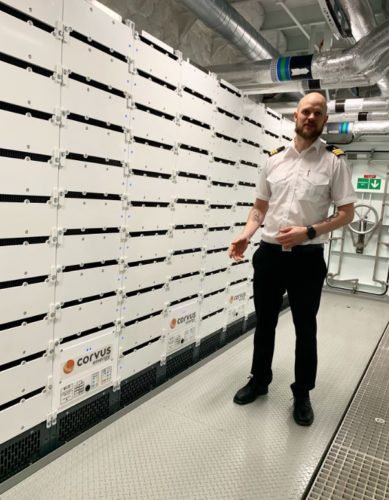
When it comes to the environment and sustainability, cruise ships and many cruise ship operators get failing grades when it comes to controlling carbon emissions, recycling and treating water, waste and sewage.
But thanks to new technology and the scrutiny of passengers, government agencies and environmental groups, the tide is beginning to turn in favor of the earth.
Norwegian cruise operator Hurtigruten is on the leading edge of that effort with the world’s first hybrid electric-powered expedition ship, which recently made history as the first ship of its kind to traverse the Northwest Passage.
The 530-passenger MS Roald Amundsen is named for the Norwegian explorer who was the first person to navigate the Northwest Passage by boat and the first person to cross Antarctica and reach the South Pole.
Hurtigruten’s sustainability policies include a ban on single-use plastics and the goal of being totally emission-free within 20 years. The Roald Amundsen moves the company towards that goal by featuring a hybrid operating system that uses large banks of batteries to supplement the power of the main engines, which run on low sulfur marine gas oil.

“Excess, unneeded energy from the engines is stored in the batteries and when the engine needs extra energy, we draw it back from the batteries and feed it into the engines,” Hurtigruten CEO Daniel Skjeldam told NBC.
That reduces fuel usage, allows the engines to operate at their optimum levels and lowers CO2 emissions by 20 percent.
The ship also has the option to run on battery power alone for limited periods, during which time it uses no fuel and creates zero emissions.
Charging the batteries from the ship’s excess energy is essential, said Skjeldam, because there are currently no power charging stations for ships to plug into in port.
The company’s next hybrid ships will be different, he says.
Those ships will have plug-in capability and be able to recharge at power stations Skjeldam expects to be set up along the Norwegian coast and elsewhere.
The world’s first hybrid-powered cruise ship set sail from Norway in July and is now in Vancouver, B.C. preparing for a season of expedition cruises in Antarctica. Hurtigruten will debut a second hybrid-powered ship, the MS Fridtjof Nansen, in 2020. A third, yet unnamed hybrid-powered ship will be delivered in 2021.
Hurtigruten’s next generation of hybrid ships, along with a half-dozen of its retrofitted existing ships, will run on a mixture of battery power, liquified natural gas (LNG) and biogas made from organic waste, such as dead fish.
“Bio-gas is like a Kinder Egg of fuel; it is like those chocolate eggs with treats inside,” said Skjeldam. “Passengers on our ships will eat fish. The waste from that fish and from the fish farming industry will go into a production plant that generates gas for our ships and creates fertilizer for the agriculture industry.”
Skjeldam says that, for now, Hurtigruten’s hybrid ships and its commitment to far-reaching sustainability practices is an expensive proposition.
“We expect the technology to be cheaper in the future. But we know passengers don’t want to visit beautiful, pristine places on an operator that is not taking the nature they sail to seriously. Some cruise lines say they’re green, but passengers can tell the difference.”
Other cruise lines do their part – or not
The world’s largest cruise company, U.S.-based cruise ship operator Carnival Corp., was in court this week to address charges that it continues to violate environmental laws by discharging plastics, food, or “gray water” into protected areas.
“Compliance, environmental protection, safety — it’s the first thing,” Arnold Donald told the court. “Without it, we don’t have a business.”
On the positive side, though, Norwegian Cruise Lines Partners recently announced that it is on target to reach its goal of replacing all single-use plastic bottles across its fleet by Jan. 1, 2020.
Lindblad Expeditions announced its intention to become a carbon-neutral company starting this year by making investments to offset 100 percent of its emissions.
And the global cruise industry is working as a group to meet a goal the Cruise Lines International Association announced in 2018 of reducing the rate of carbon emissions across the industry fleet by 40 percent by 2030.
(My story about the world’s first hybrid electric-powered cruise ship first appeared on NBC.com)






